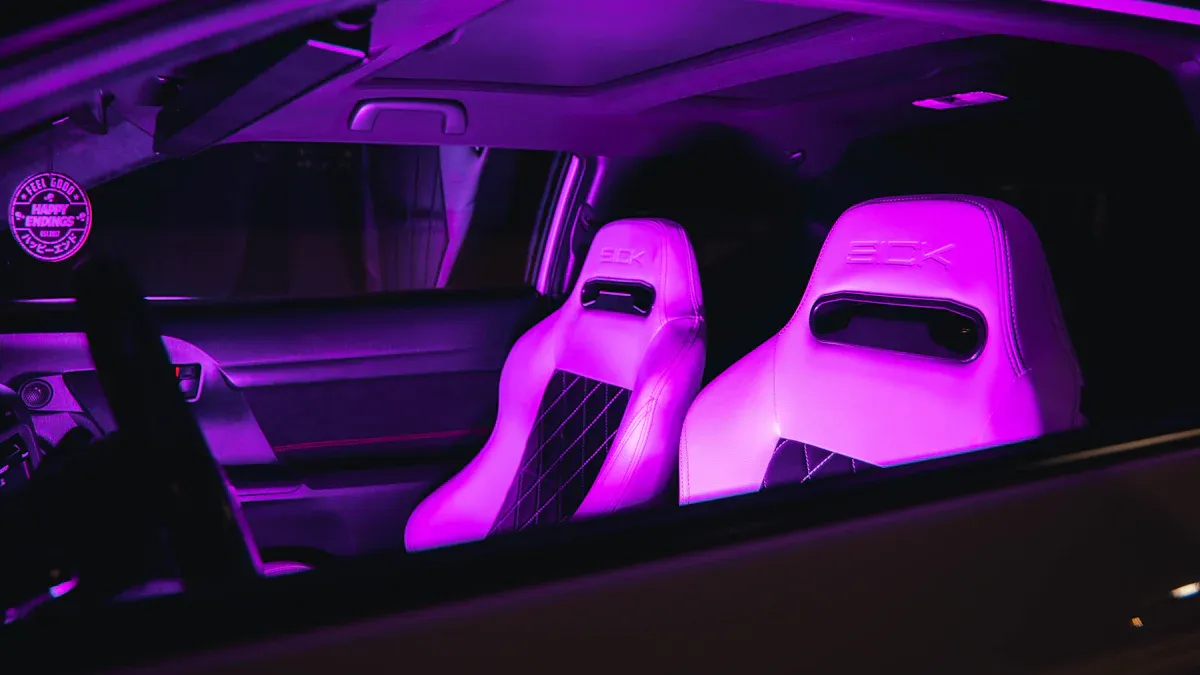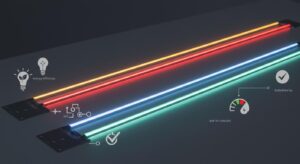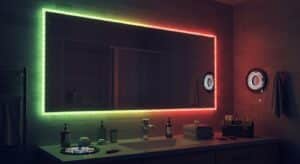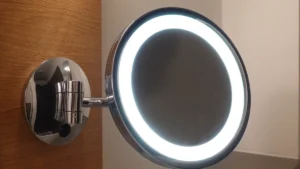
Enhancing your vehicle with 12 volt LED Strip Lightsautomotive can significantly improve its appearance and functionality. These lights are highly energy-efficient, consuming up to 80% less power compared to traditional halogen bulbs. They are durable, with a lifespan of up to 50,000 hours. The global automotive lighting market is projected to reach $38.8 billion by 2025, highlighting their growing popularity. With 12 volt LED Strip Lightsautomotive, you can personalise both the interior and exterior of your car, making it stand out while enjoying practical advantages such as superior illumination and reduced energy consumption.
Key Takeaways
Pick LED strips that work with your car’s 12V system. This helps them work well and prevents electrical problems.
Measure the space where you’ll install the strips. Choose the right size and flexible strips for a good fit.
Think about how bright and what colour the lights should be. This helps create the mood you want in your car.
Use sticky backing to make installation simple. Add clips or connectors to keep them secure in tough conditions.
Look at the IP rating to check if the strips are waterproof. Make sure they are strong enough for outdoor use.
Compatibility with 12V Electrical Systems
Understanding 12v led strips and power needs
When picking 12v led strips for your car, knowing their power needs is key. These strips run on a 12-volt system, common in most cars. But not all LED strips are the same. Some need extra parts like resistors or converters to work properly. Make sure the power source matches the strip’s voltage and current needs.
Car LED lighting has improved a lot, offering better safety, energy saving, and design options. Companies like Infineon create smart solutions for reliable and stylish LED lights. These upgrades ensure LED strips are high-quality and dependable for your car.
Measuring size for a good fit
Before buying LED strips, measure the space where you’ll install them. LED strips come in different sizes, so picking the right one ensures a good fit. Use a tape measure to check the space and match it with the strip’s size.
Think about how flexible the strip is too. Some LED strips bend easily, great for tricky spots. Addressable LEDs allow more customisation and fit tight spaces while giving cool lighting effects.
Checking wiring and connectors
To avoid problems, make sure the LED strips match your car’s wiring and connectors. Many cars use single-wire systems, so careful setup is needed. LED strips must follow rules for stop, turn, and tail lights.
Managing power is also important. Properly connected wires stop electrical issues and keep lights working well. Converters help balance power in the car’s system, especially when adding LED strips. They ensure all lights work as they should.
Tip: Always compare your LED strip connectors with your car’s wiring. Matching connectors make installation easier and prevent electrical troubles.
Brightness and Colour Choices for LED Strip Lights
Picking the right brightness level
When buying LED strip lights, think about how bright they are. Brightness is measured in lumens, which show how much light you see. More lumens mean brighter lights, great for outside areas like under your car. For inside, fewer lumens give a softer, relaxing glow.
To compare how bright different lights are, check the lumens number on the box or online. This helps you pick the right brightness for what you need.
Deciding on colour tone and custom features
Colour tone shows how the light looks, from warm to cool shades. It’s measured in Kelvin (K). Warm tones (1800K-3000K) feel cosy, while cool tones (5000K-6500K) look fresh and modern.
Some LED strips let you change brightness and colour tone. This makes it easy to match the light to your style. These features make your lighting setup more flexible.
Trying RGB and multi-colour lights
RGB strips are a favourite for car lighting. They mix red, green, and blue lights to make many colours. You can create fun effects like fading or flashing to make your car unique.
Multi-colour strips let you switch between colours or mix them for cool effects. Many RGB strips come with remotes or phone apps, so you can easily change the lights.
Tip: Use RGB strips to brighten up parts of your car, like the footwells or dashboard, for a bold look.
Measurement Type | What It Means |
|---|---|
Lumens (lm) | Shows how bright the light looks to your eyes. Useful for comparing LED strips. |
Colour Temperature (K) | Measures light colour, from warm (1800K) to cool (6500K). |
Colour Rendering Index (CRI) | Rates how well colours look under the light, scored from 0-100. |
Installation Tips for 12 Volt LED Strip Lightsautomotive
Easy setup with adhesive backing
Adhesive backing makes putting up LED strips simple. Most 12V LED strips have sticky backing to attach directly to your car. You don’t need extra tools for this. Clean the area first to help the adhesive stick well. Use a damp cloth or alcohol wipes to remove dirt or grease.
Don’t install the strips in direct sunlight. Heat can weaken the adhesive. Once the surface is clean and dry, peel off the adhesive cover. Press the strip firmly onto the spot you want. Hold it for a few seconds to make sure it sticks.
If the adhesive doesn’t hold, try extra methods like double-sided tape or brackets. These give more support, especially in areas with vibrations or moisture.
Securing strips with connectors and clips
Connectors and clips keep LED strips in place securely. They also make the setup look neat and tidy. Use connectors to join strips or link them to power. These small parts make installation easier without needing to solder.
Clips are great for holding strips firmly on surfaces. They stop the strips from sagging or falling off. Place clips evenly along the strip for better support. This works well on curved or uneven spots where adhesive might not be enough.
Make sure connectors and clips match your LED strips. Some are made for specific types, like RGB or single-colour strips. Using the right tools makes installation easier and more reliable.
Neat wiring for a clean look
Good wiring makes your LED strip setup look tidy and work well. Plan where the wires will go to keep them hidden and neat. Use cable ties or sleeves to bundle wires together. This keeps them safe and stops tangling.
Connect the wires to your car’s 12V power source securely. If your strips need extra parts like resistors, follow the instructions to install them. Test the lights before finishing the wiring to check they work.
For a polished look, cover exposed wires with heat shrink tubing. This protects the wires from damage and moisture. It also makes the setup look professional. Following these steps ensures a safe and neat installation for your car.
Pro Tip: Test your LED strips after wiring them. This checks everything is connected and working properly.
Durability and Waterproofing in 12V LED Strips
Why IP ratings matter for vehicles
When picking LED strips for cars, check the IP rating. This shows how well the strip blocks dust and water. For cars, an IP65 rating or higher works best. It means the strip can handle rain or splashes. For outdoor use, choose IP67 or IP68 ratings. These protect against heavy rain or short dips in water.
IP ratings help keep the strips strong. Without them, water or dirt can ruin the strip. Always read the product details to confirm the IP rating before buying.
Choosing heat-proof and vibration-safe strips
Cars face tough conditions like heat and shaking. To make LED strips last, pick heat-proof ones. These won’t bend or stop working in hot weather.
Strips that resist vibrations are also important. Strong designs stay in place on rough roads. Look for strips marked as tough or made for cars. These features keep the strips working well in hard conditions.
Making strips last outdoors
For outdoor use, get LED strips that handle bad weather. Waterproof strips protect against rain, snow, and dampness. UV-resistant coatings stop sunlight from causing cracks or fading.
Clean the strips often to remove dirt and dust. Install them securely to avoid damage from wind or shaking. Using good materials and proper care helps the strips work well for a long time.
Tip: Test your LED strips for waterproofing before putting them outside. This ensures they are ready for outdoor conditions.
Cost and Value in LED Strip Lights
Choosing between affordable and high-end options
When picking LED strip lights, you’ll see cheap and expensive choices. Cheaper strips usually have basic features like one colour and lower brightness. These are good if you want a simple and low-cost option. On the other hand, pricier strips offer cool extras like RGB colours, app controls, and brighter lights. These are perfect for a fancier and more customised look.
People’s preferences for these two types vary a lot. Fancy LED strips are used by 40%-60% of buyers, with 70% happy to pay more for better features. Cheaper ones are less popular, with only 5%-10% of buyers choosing them as they focus less on luxury.
Type | Usage Rate | Willing to Pay More |
|---|---|---|
High-End | 40%-60% | 70% |
Budget-Friendly | 5%-10% | Less focus on extra features |
Checking warranties and reviews
Warranties and reviews are important when judging LED strips. A good warranty shows the maker trusts their product. Look for warranties lasting at least a year to cover any problems.
Reviews from buyers tell you how the lights work in real life. Check what people say about how strong, bright, and easy to install they are. Reviews also reveal if the product matches what’s advertised. This helps you pick wisely and avoid bad surprises.
Finding the right mix of quality and price
Getting the right mix of quality and price saves money over time. Cheaper strips might seem like a good deal but may break easily or lack features. This means you’ll need to replace them often, costing more in the long run.
Expensive LED strips cost more upfront but last longer and save energy. They use less power, which lowers your car’s energy use. Over time, you’ll save money on replacements and electricity, making the higher price worth it.
Tip: Think about what you really need and pick features that improve your car. This way, you’ll get the best mix of quality and price.
Picking the best 12V LED strip lights for your car means checking if they fit, how bright they are, how to set them up, how strong they are, and how much they cost. Each part is important to make sure the lights work well and look good on your car.
Think about what you like before buying. Decide where to put the lights, how bright you want them, and if they need to handle water. A good guide can help you choose wisely.
The right LED strips can change your car’s look and use. Whether you want soft light or bright effects, these strips give you many options.
FAQ
1. Can you set up 12V LED strip lights yourself?
Yes, you can do it on your own. Many strips have sticky backs and easy-to-use connectors. Clean the area, stick the strips, and link them to power. Follow the product guide for a smooth installation.
2. Are 12V LED strip lights safe for cars?
Yes, they are made for vehicles and work with 12V systems. Pick strips with good IP ratings and heat-proof materials. This keeps them safe and strong in different conditions.
3. How do you manage RGB LED strip lights in cars?
You can use remotes or phone apps to control them. These let you change colours, brightness, and effects. Some systems even match lights to music or voice commands.
4. Can waterproof LED strips handle bad weather?
Yes, waterproof strips with high IP ratings like IP67 or IP68 can resist rain, snow, and dirt. UV coatings stop sunlight damage, keeping them reliable outdoors.
5. How long do 12V LED strip lights last?
Most strips can shine for up to 50,000 hours. Their life depends on how you use them and where they’re installed. Taking care of them helps them last longer.
See Also
Selecting The Perfect LED Strip Lights For Linear Lighting
Ultimate Resource For Choosing Outdoor LED Light Strips
Five Essential Tips For Selecting Quality LED Strip Lights
Comparative Analysis Of High-Brightness LED Strips For All Uses



